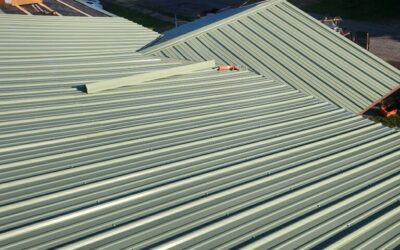Nail-Over Reroofing: Comprehensive Guide for Homeowners
Nail-over reroofing, also known as a roof overlay or re-cover, involves installing new roofing shingles directly over existing ones without removing the old layer. This method offers a cost-effective and time-saving alternative to a full roof replacement, but it comes with its own set of considerations. In this guide, we’ll delve into the pros and cons of nail-over reroofing, helping you determine if it’s the right choice for your home.
What Is Nail-Over Reroofing?
Nail-over reroofing is the process of adding a new layer of shingles over an existing roof. This method is typically used when the existing roof is nearing the end of its lifespan but is still structurally sound. It’s important to note that building codes in many areas, including Ashtabula, Ohio, limit the number of shingle layers to two for fire safety reasons. Therefore, nail-over reroofing is only an option if your roof has a single layer of shingles.
Advantages of Nail-Over Reroofing
1. Cost-Effective
One of the primary benefits of nail-over reroofing is cost savings. By eliminating the need to remove and dispose of the existing shingles, you can save on labor and landfill fees. This makes it an attractive option for homeowners on a budget.(S&K Construction And Remodeling LLC,
2. Time-Saving
Since there’s no need to tear off the old roof, the installation process is quicker. This reduces the time your home is exposed to the elements and minimizes disruption to your daily life.(
3. Less Disruption
Nail-over reroofing generates less noise and mess compared to a full tear-off, making it a more convenient option for homeowners who want to minimize disruption during the roofing process.
Disadvantages of Nail-Over Reroofing
1. Additional Weight
Adding a second layer of shingles increases the load on your roof structure. If your home’s framing isn’t designed to support the extra weight, it could lead to structural issues over time.
2. Limited Inspection
Installing new shingles over old ones prevents a thorough inspection of the underlying roof deck. This means potential issues like rot or damage may go unnoticed and unaddressed.
3. Shorter Lifespan
A nail-over roof may not last as long as a complete tear-off and replacement. The underlying shingles can trap heat, causing the new layer to age more quickly.(
4. Warranty Limitations
Many manufacturers offer limited warranties for nail-over installations. You may not qualify for enhanced warranty protection typically available with full roof replacements
5. Reduced Resale Value
A new roof can increase your home’s value, but a nail-over reroof may not add much or anything at all. Potential buyers may view it as a temporary fix rather than a long-term solution.(
Is Nail-Over Reroofing Right for You?
Consider nail-over reroofing if:
- Your existing roof has only one layer of shingles.
- The roof deck is in good condition without signs of rot or damage.
- You’re looking for a cost-effective and quicker roofing solution.
However, opt for a full roof replacement if:
- Your roof has multiple layers of shingles.
- There are signs of damage or rot in the roof deck.
- You want to ensure a longer lifespan and better warranty coverage.(
Conclusion
Nail-over reroofing offers a budget-friendly and less disruptive alternative to full roof replacement. However, it’s essential to weigh the pros and cons carefully. Consult with a reputable roofing contractor in Ashtabula, Ohio, to assess your roof’s condition and determine the best course of action for your home.
For a visual comparison between nail-over reroofing and full roof replacement, you might find this video informative:
Roof Tear Off vs Roof Nail Over (Nail Over Pros and Cons)
 (440) 307-2060
(440) 307-2060

